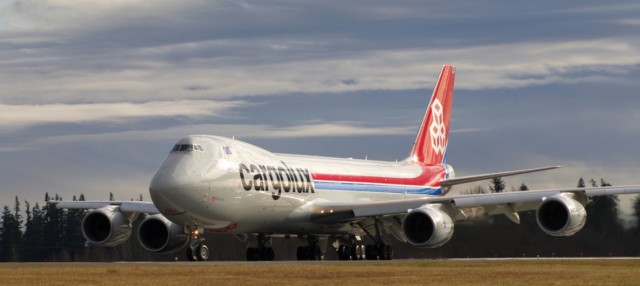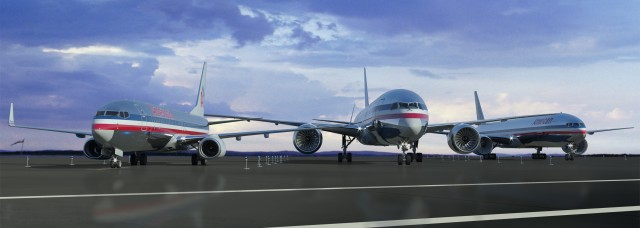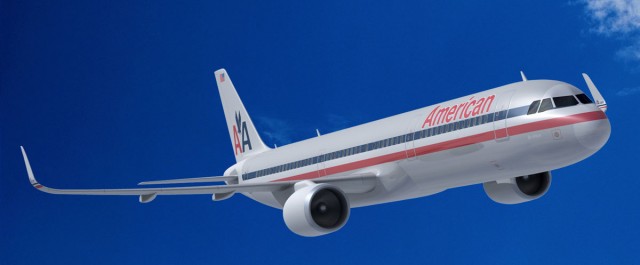
We still do not know much about what has caused Cargolux to pull out of taking delivery of their first new Boeing 747-8Fs.
As announced last week, Cargolux refused to take delivery of their first two Boeing 747-8 Freighters. They were supposed to take delivery of their first one yesterday and their second one tomorrow, but at this point no one is sure when the deliveries will occur.
Not many people are talking about what is going on. Boeing told me via email, “Nothing new to report. Same status as Friday,” which means, “We have unresolved issues between ourselves and Cargolux. We are working with our customer to determine a date for delivery.” Luckily for us, some journalists have received “insider” information that puts some light on what is going on between Boeing and Cargolux.
At the beginning of this controversy, some thought this might have something to do with the Boeing 747-8F not living up to performance expectations. It appears that performance issues might have something to do with this, but it might be more politically motivated.
Scott Hamilton, with Flightglobal, is reporting that Qatar Airways, who recently purchased a 35% stake in Cargolux, is requiring additional compensation for delays to their Boeing 787 Dreamliners. Previously Qatar and Boeing had an agreement on that compensation, but it appears that Qatar might be looking for a better deal. According to Hamilton’s sources, “Qatar’s chief executive Akbar Al-Baker views the compensation for Cargolux as setting a benchmark for the sum due for the delays to Qatar’s 787s.”
Hamilton is also reporting that that another, unnamed, Boeing 747-8F customer is looking for changes in their contracts. Originally they were slated to take delivery of the first test aircraft (presumably at a lower price), but now are wanting aircraft that will not require re-working after they take delivery.
It seems unlikely that this dispute would only revolve around the Boeing 747-8’s performance issues, since Boeing has been forthcoming about the aircraft’s additional weight for quite some time. In an email to the Puget Sound Business Journal Boeing stated, “It’s misleading to say we missed our specifications. After we set our original specification, we completely redesigned the wing, which is significantly heavier, but more than makes up for that in increased aerodynamic efficiency and lower fuel burn.’
In a press release, issued by Cargolux, they confirmed that they are working with Boeing to resolve contract issues, but are ready to move forward with leasing additional aircraft if needed. “In the event that the issues cannot be resolved in a timely manner, Cargolux will source alternative capacity to fully meet customer demand and expectations ahead of the traditional high season.”
Jon Ostrower on Flightglobal is reporting that delivery of Cargolux’s two 747-8Fs during the week of September 19th-24th is, “highly unlikely.” It doesn’t seem anyone (even Boeing and Cargolux) are sure when the aircraft might be delivered.
Yesterday, Brandon Farris caught a Cargolux Boeing 747-400 landing at Seattle-Tacoma International Airport (SEA). It is not unusual to see Cargolux aircraft at SEA, but the timing was a bit off from when they usually fly in. This particular aircraft runs between Mexico (MEX), Atlanta (ATL), New York (JFK), Houston (IAH), and Luxembourg (LUX), but not Seattle. I assume that this 747-400 picked up cargo at SEA that the first Cargolux Boeing 747-8F was supposed to deliver to Luxembourg (where Cargolux is head quartered).
At first, it appeared that Boeing might come off looking like the bad one in this conflict, but if the rumors of Qatar Airways strong arming Boeing into a better deal for the 787s at the expense of Cargolux not receiving their 747-8Fs, then Boeing might not coming off looking so poorly.
I will be sure to keep you all updated as new information surfaces.
UPDATE 1:
Guy Norris, with Aviation Week, goes into detail on what the Boeing 747-8F is lacking as far as performance (thanks @mtrumpbour for pointing this out). He states that there is a 2.7% greater fuel burn than expected. GE is working on a fuel savings package for their GEnx-2B engines on the 747-8F, but those will not be completed until 3rd quarter 2013 and are only expected to improve fuel consumption by 1.6%.
Norris states that Qatar Airway’s deal to purchase a 35% stake occurred in June, 2011, but it took three months to be ratified by the governments of each country. This happened only a few days before the 747-8F deliveries were to take place.
Ostrower, who is currently in Seattle for the 747-8F delivery, caught Boeing doing some interesting 747-8F moving around today at Paine Fieldand posted on his Flickr.
UPDATE 2 9/21 7:30am:
Matt Cawby with KPAE Blog is reporting that one of Cargolux’s Boeing 747-8Fs (LX-VCB) went on a customer test flight, meaning the airline’s pilots were on board. This normally is a sign that Boeing is getting close to delivery. Cawby is hearing rumors that the first aircraft might deliver Tuesday September 27th.
Firdaus Hashim on Flighglobal is reporting that Cathay Pacific Airways is “satisfied” with their 747-8Fs, which they are expected to take delivery of in October. “Cathay Pacific’s commercial arrangements with all its suppliers, including Boeing, are confidential. However, we are satisfied that our commercial arrangements with Boeing take account of the known and disclosed specification and performance characteristics of the aircraft,” said Hong Kong’s flag carrier in a statement.
Thanks to Marshall Autry (Vintage Racer) for letting me use his photo.

Computer generated image of an American Airlines Boeing 737, 787 Dreamliner and 777. It is fun to see the 787 in metallic finish, but the composite body would not make that possible. Image via Boeing.
I spent a nice chunk yesterday evening trying to get through all the recent information on American Airline’s record breaking order of aircraft. My first big question is why would an airline that lost $286million during 2nd quarter 2011, look to spend so much money on new aircraft? Airlines that lose money is not a new concept, but at a time when most airlines are raking in profits, American is still stuck in the red. The airline obviously needs to do something drastic and they are hoping that updating their fleet will achieve their goal. It seems like this is the correct direction, but there is much more than new planes needed to survive.
In case you missed it, American Airlines announced the purchase of 460 new aircraft, which is the largest single order in history. This will include 260 Airbus and 200 Boeing aircraft. I assume that the folks at American have run the numbers and found that with the expected cost of fuel and maintenance of older aircraft, it makes more sense, long term, to operate newer aircraft. It is likely that American had a huge advantage working Boeing and Airbus against each other to achieve the best pricing and they have beat Delta Air Lines and United Airlines to the punch of updating their fleet. In fact, American expects to have the newest fleet of all major US carriers in just five years, which is an impressive feat knowing that their average age of aircraft today is about 15 years.
According to Boeing’s press release, American was offered a 737 re-engine option that has not yet been approved by the board of directors. “In addition, American Airlines has committed to order a variant of the 737 featuring new more fuel-efficient engines, pending final airplane configuration and launch approval of the program by the Boeing board of directors.”
If approved, American wouldn’t be the only one interested in a re-engined Boeing 737. Flight Global quoted, Bill Ayer, CEO of Alaska parent Alaska Air Group, during an earnings call yesterday as saying, “We are very much in favor of lower fuel burn, and if Boeing can do this sooner rather than later, that’s a good a thing.” Alaska Airlines operates a fleet of only Boeing 737s.
Southwest Airlines is another all-Boeing airline based in the US and Brad Hawkins with corporate communications told AirlineReporter.com, “We, of course, have frequent dialogue with our partners, including Boeing, but we don’t disclose the details of those conversations unless we have an update to share.” I think it would be obvious that Southwest would like a plane with better efficiency to start replacing their large fleet of older 737-300s and 737-500s.

Computer rendering of an Airbus A320 in American Airlines livery. Notice the flat gray paint. Image via Airbus.
It seems the bottom line here is survival. American knows that gas isn’t going to get any cheaper and continuing to operate fuel inefficient aircraft is not going to be sustainable. However, survival is going to take more than just new aircraft.
One of the first things I thought of with such a large order is, “livery change.” When I posted how I wasn’t a huge fan of the current American Airlines livery, I got a lot of backlash. It seems that either folks love the current livery or feel it is aged and time to go. If American is looking to modernize their fleet and move into the future, I think they need a livery to match.
Yes, it is unique design, but it just looks aged. Then add the fact that the Boeing 787 Dreamliner (which American has 42 on order) won’t work with American’s bare fuselage livery due to the composite material and you have a great opportunity to change livery. I think painting the aircraft with a metallic silver base paint with updated, swooping, red, white, and blue lines could look slick. Then add a single color AA Eagle to the tail and you have yourself one nice looking livery — with ties to the past. Going with a flat gray paint scheme was done with the Airbus A300 and it looks better than the patchy A300 with bare metal, but still not a modern looking scheme. When I asked American about the possibility of a new livery they stated that, “Those decisions have not been made yet. That said, we do have to determine how to paint the 787. Obviously, we have to determine and make that decision well before the actual delivery in 2014 since painting is part of the manufacturing process.”
With the retro-fitting of new interiors, the addition of the Boeing Sky Interior on their new Boeing 737-800s and new aircraft on order, American Airlines appears to be making a genuine effort. They have also been working to improve their interaction with customers via Facebook and Twitter, which helps them connect with the younger (and more hip older) passengers. They still need to tackle their problems with having a lot of debt, not making a profit and labor cost disadvantage.
After the order was announced, there has been a lot of criticism of American not buying all US built Boeing aircraft — accusing the airline of being un-American. That seems a bit mis-informed since we live in a global economy and trying to make the best deal to earn the most money possible sounds pretty darn American to me. United and Delta, who are the world’s two largest airlines, both operate both Boeing and Airbus aircraft. Not to mention that Air France (Airbus is headquartered in France) operates a fleet of over 80 Boeing (including cargo) airliners.
Be sure to also read:
* Jon Ostrower, on his blog Flight Blogger, posted an informative story on all the numbers relating to this deal and some are a bit surprising.
* Brett Snyder, on CrankyFlier, takes a detailed look how these new aircraft will more than replace the aging MD-80, Boeing 757 and Boeing 767-200 in American’s fleet. He theorizes that American might be looking to replace some smaller aircraft currently flying with American Eagle with larger Airbus A319 and Boeing 737-700 planes.


